ARDF Equipment
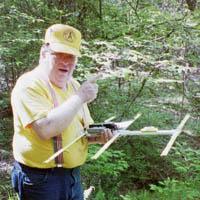
| |
All you need to enjoy ARDF is a hand-held directional antenna, a radio
receiver, and a sense of adventure!
|
The basic electronic equipment needed for ARDF includes one or more
transmitters to locate, and a hand-held direction finding receiver for
each participant. ARDF equipment does not need to be very expensive or
complicated. Many ARDF enthusiasts begin with simple equipment
when they first get interested, then improve their equipment later.
Unfortunately, there are few sources in the Americas for commercially-produced
equipment designed for ARDF. Fortunately, it is not too difficult to
find used or new equipment from Europe, Australia, or Japan, and many
ARDF enthusiasts enjoy building their own gear from kits or published
designs.
Some specific examples of ARDF equipment, kits, and plans are listed below
to help those interested in becoming involved in ARDF. These are not the
only options for getting on ARDF. If you think you might enjoy designing
or building your own ARDF equipment, Dale Hunt WB6BYU has written an article
on ARDF
Equipment Design Considerations.
2 Meter ARDF Receivers
The typical two meter ARDF receiver consists of a short hand-held yagi
antenna with two or three elements, and a dedicated receiver and attenuator,
often mounted on the antenna boom. A short yagi with a boom of ~50 cm (~20")
is small enough to carry through the woods, and can be designed to have a
clean pattern for direction finding. Many ARDF enthusiasts build these
antennas out of inexpensive steel tape measure material that can survive
rough treatment in the woods. Two meter receivers can be everything from an
HT with an external attenuator, to a dedicated ARDF receiver with built-in
ARDF features like automatic attenuation, audio S-meters, and more. In
the Americas, most ARDF competitions on two meters use FM transmitters, so
having an FM receiver is important.
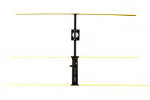
|
RigExpert FoxRex 144
A commercial ARDF receive for 2 meters, available from
RigExpert, the FoxRex 144 features
a digital VFO, LCD indicator, memories, and many other features.
|
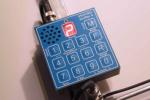
|
VK3YNG Foxhunt 2M Sniffer
This integrated ARDF receiver from Bryan Ackerly VK3YNG is one of the most
popular ARDF receivers for two meters. It receives AM, FM, and CW,
incorporates an audio S-meter (with stereo headphones,) and
automatic-ranging attenuation.
|
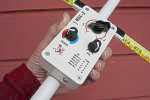
|
ROX-2T Receiver
D.J. Deane G3ZOI presents schematics, circuit board layout, and enclosure
details for a low cost, single conversion two meter ARDF receiver, which
is also available for purchase as a kit.
|
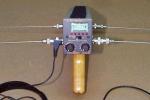
|
Mizuho FRX-2001
Mizuho is a small Japanese
manufacturer of low power Amateur Radio equipment, including direction finding
equipment. Finding Mizuho equipment for sale can be a challenge.
|
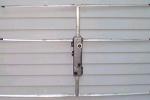
|
Altai 145 2M ARDF Receiver
Altai 145 receivers were commercially produced in the Soviet Union, and were
widely used in physical education classes in schools. Available on the used
market, it has a rechargeable battery and uses high impedance headphones.
|
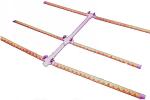
|
WB2HOL Tape Measure Yagi
Joe Leggio WB2HOL presents his classic, detailed construction article about
building two meter yagis out of steel tape measure material and PVC tubing.
These yagis are inexpensive, and rugged enough to handle wooded terrain.
|
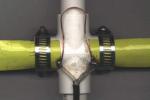
|
WB6BYU Tape Measure Yagi
Dale Hunt WB6BYU offers some alternative dimensions for constructing tape
measure yagis for two meters. Dimensions are offered for 45 centimeter
boom yagis and 60 centimeter boom yagis.
|
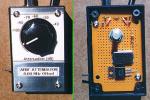
|
K0OV Offset Attenuator
This offset attenuator design from Joe Moell K0OV provides over 100 dB of
attenuation, and is perfect for use with a general purpose hand-held
receiver. This is an easy starter project to build yourself.
|
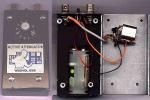
|
WB2HOL Offset Attenuator
This offset attenuator design from Joe Leggio WB2HOL has a 1 MHz offset and
over 100 dB of attenuation. It uses only a few parts and can be built
into a small project box.
|
80 Meter ARDF Receivers
The typical 80 meter ARDF receiver consists of a hand-held CW receiver with
a magnetic loop antenna or a ferrite rod antenna attached to it. Most simple
CW or SSB receiver circuits for 80 meters will work for ARDF. Magnetic loop
and ferrite rod antennas produce a bi-directional pattern, with two symmetrical
nulls. Using an additional sense antenna (a small vertical whip) can change
the pattern to a cardiod shape with a single (but less sharp) null. Most ARDF
receivers for 80 meters use a momentary contact switch to engage the sense
antenna when needed.
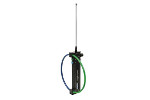
|
RigExpert FoxRex 3500
A commercial ARDF receive for 80 meter, available from
RigExpert, the FoxRex 3500 features
a digital VFO, LCD indicator, memories, and many other features.
|
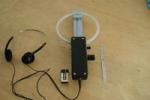
|
WB6BYU 80M ARDF Receiver
Dale Hunt WB6BYU has designed a low-cost, direct-conversion, magnetic loop
receiver for 80 meter ARDF that was featured in the September, 2005 issue of
QST. Kits or fully assembled
receivers are available for purchase from Marvin Johnston KE6HTS.
|
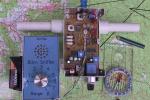
|
VK3YNG Foxhunt 80M Sniffer
This integrated ARDF receiver from Bryan Ackerly VK3YNG is a super heterodyne
receiver with an integrated ferrite rod antenna.
|
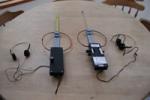
|
WB8WFK FoxFinder 80
This direct conversion receiver from Jerry Boyd WB8WFK uses a magnetic loop
antenna. Printed circuit boards and a detailed construction article are
available for this receiver design.
|
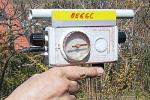
|
OE6GC ARDF80 Receiver
Harry Gosch OE6GC presents a detailed construction article for building a
compact, portable 80 meter ARDF receiver that uses a ferrite rod antenna.
|
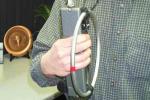
|
Altai 3,5 80M ARDF receiver
Altai 3,5 receivers were commercially-produced in the Soviet Union, and were
widely used in physical education classes in schools. Available on the used
market, the receiver uses a magnetic loop antenna, and high impedance
headphones.
|
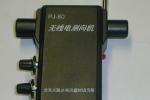
|
PJ-80 ARDF Receiver
This simple 80M receiver with integrated ferrite rod antenna is commercially
available in China.
|
Transmitter Equipment
Hidden transmitters in ARDF competitions usually consist of a battery (sealed,
lead-acid batteries are popular,) a transmitter, a transmitter controller, and
an omni-directional antenna. On two meters, HTs are commonly used together
with horizontally-polarized loop or turnstile antennas. On eighty meters,
crystal-controlled transmitters are commonly used with shortened verticals,
either hung from a tree or from the top of an extendable fishing pole.
Transmitter controllers handle the sending of MCW (on FM 2M transmitters) or
CW (on 80M transmitters) and timing the transmit sequence. The entire
package can be bundled into a water-tight enclosure such as an old ammunition
case or hunter's dry box.
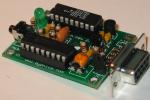
|
PicCon Transmitter Controller
This transmitter controller designed by Byon Garrabrant N6BG is ideal for
ARDF competitions. It can key transmitters in sequence, can key both CW
and MCW, and can be remotely controlled with DTMF tones.
|
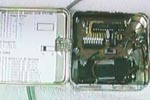
|
Montreal Fox Controller
This transmitter controller designed by Francois Tremblay VE2JX and Jacques
Brodeur VE2EMM keys both MCW and CW, and features IARU mode, delayed starts,
and low power consumption. Printed circuit boards and microcode are
available.
|
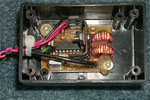
|
ON7YD ATX80 Transmitter
This design by Rik Strobbe ON7YD is a simple crystal-controlled 80 meter
CW transmitter that is popular as an ARDF transmitter.
|
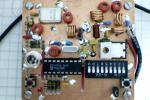
|
Montreal 525 Two Meter Transmitter
This integrated two meter MCW transmitter and controller designed by
Francois Tremblay VE2JX and Jacques Brodeur VE2EMM puts out one watt.
|
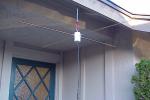
|
WB6RDV Turnstile Antenna for Two Meters
This inexpensive, omnidirectional ARDF transmit antenna is a classic
crossed-dipole design with a 75 Ohm phasing section.
|
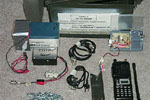
|
Albuquerque Amateur Radio Club Foxbox
Check out an example of a complete 2 meter and 80 meter ARDF hidden transmitter
box used by the Albuquerque Amateur Radio Club for the 2001 USA ARDF
Championship.
|
For More Information...
Need more ideas for equipment to use in ARDF? Joe Moell K0OV has lots
of practical information on his web site,
Homing In. Especially worth reading are his articles
"RDF Equipment Ideas
for Radio-Orienteering" and
"Try ARDF on 80
Meters." Joe has also written a book with Thomas Curlee WB6UZZ:
Transmitter
Hunting: Radio Direction Finding Simplified. Another place to
look for ideas is the
Direction Finding
Equipment Reviews on eHam.net.
|

